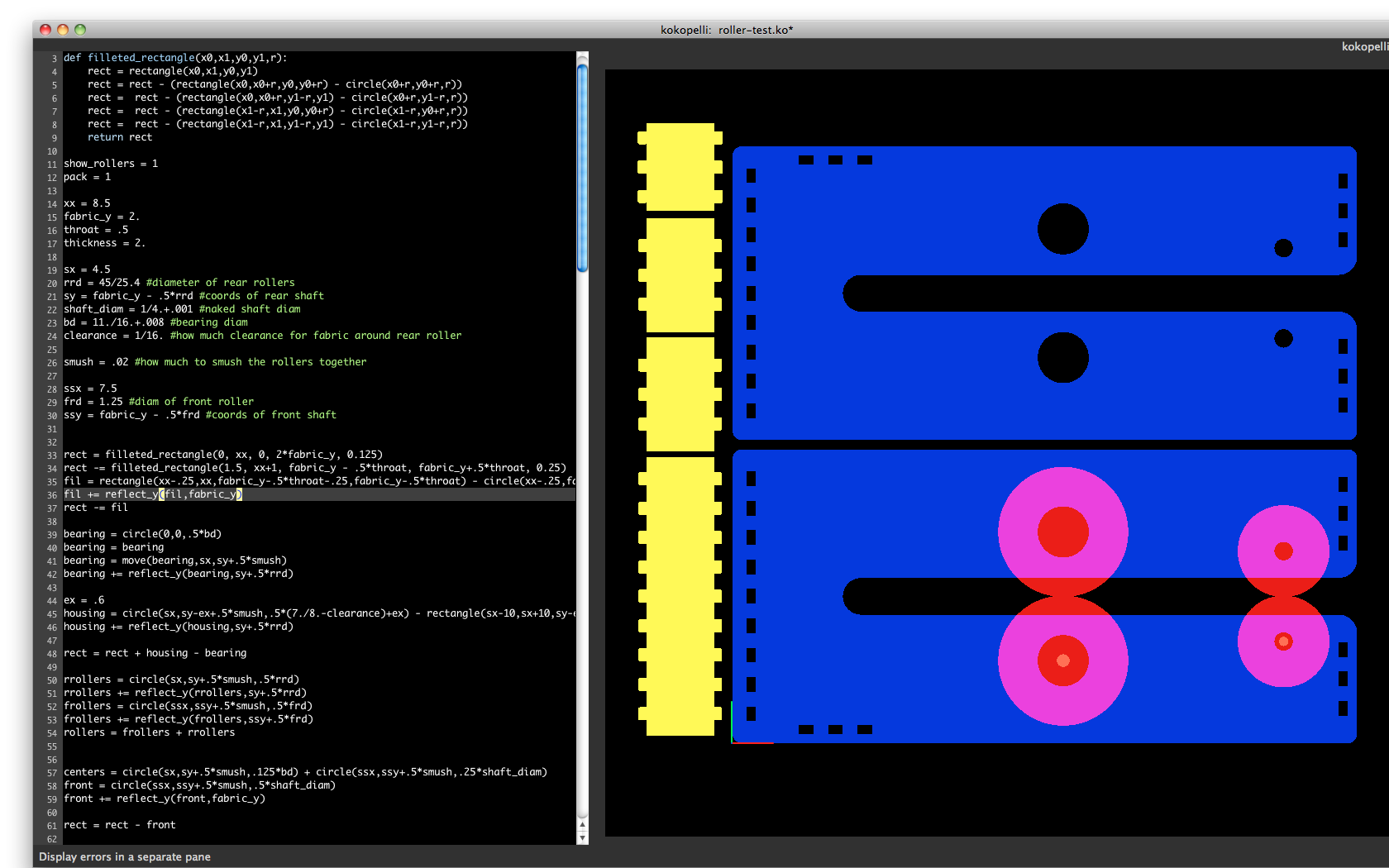
week fourteen: updates on machine building and final projects

This week was all about project development, both for machine building and for our final projects. For the machine-building assignment, my group and I are making a questionably-dubbed creepy-crawley cutter. It will use a rotary cutting blade and rubberized roller wheels to cut and pull itself along a large piece of fabric. This machine fills a void in common CNC workflows for cutting large computer-designed fabric panels. Usually, I either laser cut fabric (if the pieces are smaller than our very expensive 4'x4' laser cutter bed), or print a pattern on the large format plotter. In the latter case, I have to cut the fabric by hand using the print out -- a slow step for quick-turn prototyping. The creepy-crawler will traverse as large a sheet as you have, following a toolpath based on input geometry. Perfect for making hot-air balloons.
After a rushed parts order last week, I went through a couple design iterations, simply using kokopelli. It turned out that a lot of the design was dictated by the dimensions of available rotary cutting blades. These blades are made of tungsten steel, and hence aren't easily modified. Consequently, one set of rollers I bought from McMaster became irrelevant, and Laura and I made our own from laser-cut delrin and o-rings.

Another casualty of this change was the timing belt I bought to run the drive wheels. When these grew, the belt became too small to use without the wheels and stepper interfering.
My focus this week was on developing the cutting element and situating it in a body. Based on the results shown in the video above, I was pretty happy with the cutting mechanism. To be developed now is the steering mechanism for the front roller wheels. I anticipate making our own smaller rollers to replace these as well, and designing steering mechanisms for each front roller belted to a common servo.
After building a satisfactory steering mechanism, the plan is to build the final prototype from HDPE. After seeing Will's results on the waterjet, I think I'll follow suit, sacrificing a bit of precision for a massive speed-up in machining time.
This week was also time to start hatching plans for the final project. I think I will commit to finally finishing the low-profile pressure sensor array for shoes. Digging around for prior art, I turned up some similar projects:
While these are similar to my proposal, they all seem to lack in one of three ways. 1. Some are not low-profile -- One boasts of its thickness of 1 inch! If I am going to run with this device, it needs to feel as if it's not even there. 2. Some are not an array of sensors. One or two sensors may give some information about footstrike, but I want a more detailed picture. 3. Finally, some (in particular the piezoresistive force sensors) seem overly complicated and prone to failure and/or undue expencse. I hope that with a simple array of capacitive sensors, I can fill the gap that all this prior work leaves.
To complete this project, I need to
There are still some concerns I have for making this useful: